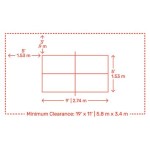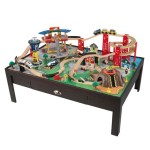The Essential Aspects of Layout for a Raised Vegetable Garden
A well-planned layout is key to a successful raised vegetable garden. The ideal design should maximize sunlight exposure, facilitate water flow, and provide easy access for tending and harvesting. Here are the essential considerations to keep in mind when planning your raised vegetable garden:
1. Site Selection
Choosing the right location for your raised vegetable garden is paramount. The site should receive ample sunlight, ideally a minimum of six hours per day. Ensure the area is well-drained and not prone to waterlogging. Additionally, consider the convenience of proximity to water sources and ease of access for maintenance and harvesting.
2. Garden Bed Orientation
The orientation of your raised garden beds plays a crucial role in sunlight exposure. For gardens located in the Northern Hemisphere, the ideal orientation is east-west, allowing plants to receive sunlight throughout the day. In the Southern Hemisphere, the orientation should be north-south.
3. Bed Dimensions and Spacing
The dimensions and spacing of your raised garden beds should be tailored to the types of vegetables you intend to grow. A width of 3-4 feet is optimal for easy access and maintenance. The length can vary depending on the size of your garden. Plan for sufficient spacing between beds to allow for air circulation and movement.
4. Height and Materials
The height of your raised garden beds should be determined by your individual needs. Higher beds provide better drainage and root development, while lower beds may be more accessible for elderly or disabled gardeners. Choose materials that are durable, such as cedar, redwood, or treated lumber, to ensure longevity.
5. Companion Planting
When planning the layout of your raised vegetable garden, consider the principles of companion planting. Certain plant species can benefit each other when planted in close proximity. For example, tomatoes and basil are known to repel pests when planted together, while carrots and radishes improve each other's growth.
6. Crop Rotation
To maintain soil health and prevent disease, incorporate crop rotation into your garden plan. Avoid planting the same type of vegetable in the same bed in consecutive years. Rotate between heavy feeders, such as tomatoes and peppers, and legumes, such as peas and beans, to restore nitrogen levels in the soil.
7. Water Management
Efficient water management is crucial for a thriving raised vegetable garden. Consider installing drip irrigation or soaker hoses to deliver water directly to the roots and minimize evaporation. Incorporate mulch around plants to retain moisture and suppress weeds.

Raised Bed Garden Plan Must Love Lists

4x8 Raised Bed Vegetable Garden Layout Ideas

Planning Your Vegetable Garden Mapping The Beds

How To Plan For A Raised Garden Bed Brepurposed

4x8 Raised Bed Vegetable Garden Layout Ideas Small Gardens

Plans For Small Space Vegetable Gardens Gardener S Supply

Raised Bed Vegetable Garden Plan Modern Frontierswoman

Raised Bed Vegetable Garden Layout Ideas

Raised Bed Vegetable Garden Plan Modern Frontierswoman

How To Design The Perfect Vegetable Garden Layout Plant
Related Posts








